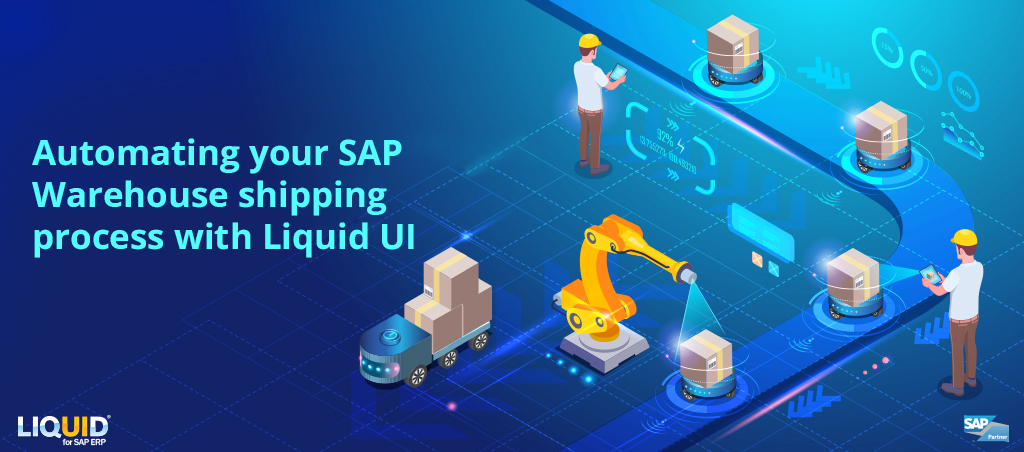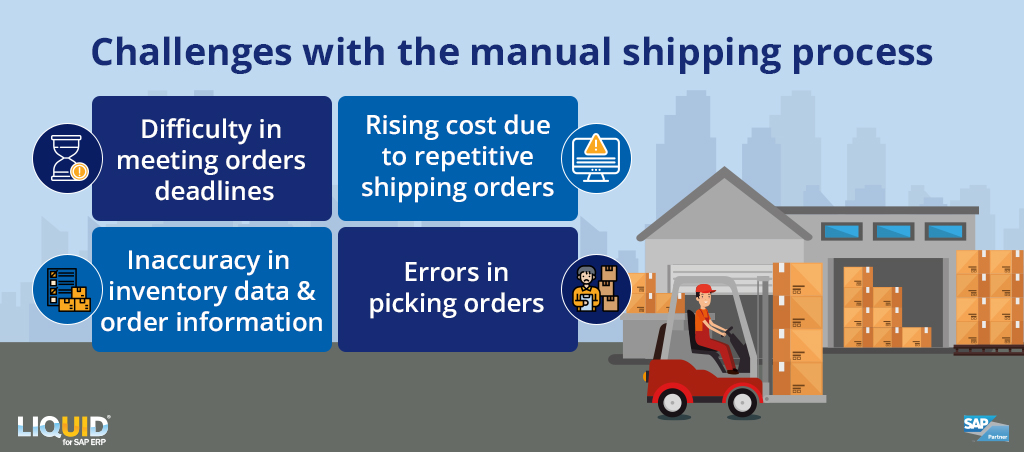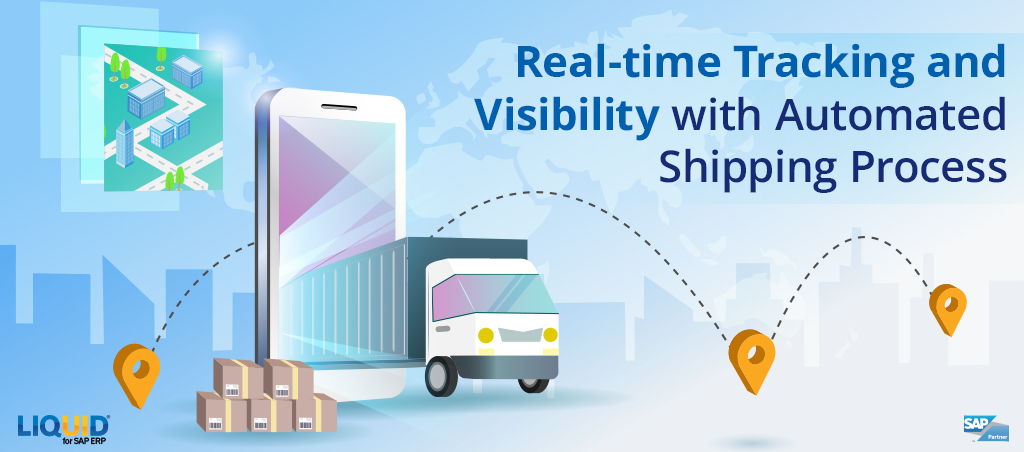
Warehouse management is a crucial part of the Supply chain and plays an important role in ensuring that inventory is managed effectively, packaged efficiently, and shipped seamlessly to the end consumer.
SAP Warehouse Management (WM) widely adopted ERP solution for planning and scheduling material movements and monitoring actual inventory levels in the warehouse. However, businesses demand more advanced features and visibility throughout the shipment lifecycle.
Every step in warehouse management affects the efficiency of the next. Every stage, from receipt to put-away, storage, picking, and packing, is critical. However, the shipping process is the final step in determining customer satisfaction and overall operational success. To optimize warehouse operations, each of these processes must be fine-tuned and their combined potential must be realized.
When it comes to the shipping process, it is important to select the right fulfillment strategy as per the business’s size, order volume, and type to speed up shipping and boost customer satisfaction.
Integrating robust software solutions such as Liquid UI into your warehouse management revolutionizes fulfillment strategies and takes the shipping process to new heights. Experince the full potential with a risk-free trail!
Shipping management in a warehouse:
Shipping plays a critical role in warehouses as it ensures products reach the end customers. Although it may appear simple, it is a complex process with multiple steps that require flawless execution. Efficient shipping management is essential to meet specific requirements and achieve customer satisfaction.
In a typical warehouse, there are two types of shipping processes: Inbound and Outbound.
The inbound receiving process deals with materials that arrive at the warehouse. It entails filling out purchase orders, receiving items at the loading dock, unloading, verifying the expected products, and integrating them into the existing inventory structure.
Outbound shipping entails preparing products for customer shipment. It begins with gathering shipping documents, followed by picking, packing, labeling, and loading the packages onto a truck to leave the warehouse.
Key steps in the basic warehouse shipping process:
- Order Information received, specifying the items and packaging requirements.
- The picking process starts when warehouse staff retrieves items based on the order information.
- Quality control checks are conducted before preparing items for shipment.
- The packing and labeling process created the final packages for customers.
- Packages were moved to a loading dock and loaded onto pallets and shipping trucks.
- The shipping log maintains updated information on shipped items and confirmation data.
Challenges with Traditional Shipping Process:
Manual shipping processes in the warehouse create obstacles that block operational efficiency and customer satisfaction. Relying on manual labor and traditional methods leads to delays, errors, and higher costs.

To address these challenges, businesses should explore the advantages of automating their shipping processes. However, automation is not limited to robotic or mechanical systems; it involves the use of software tools and services to eliminate time-consuming manual tasks performed by warehouse staff. This is commonly known as process automation, which is a cost-effective alternative to physical warehouse automation techniques.
Let’s take a look at the need and benefits of automating the shipping process in a warehouse.
Need to automate the shipping process:

Automation technologies enable streamlined operations, reduced errors, and enhanced shipping performance. Automating the shipping process minimizes manual tasks that slow down the flow of goods within a warehouse. When products undergo multiple stops during their journey within the warehouse, the probability of encountering issues rises. By reducing the number of product touches and decreasing transportation costs, valuable resources can be preserved.
By adopting automated technologies like Liquid UI for the shipping process, businesses can significantly improve efficiency, enhance customer happiness, optimize repetitive operations, reduce unnecessary costs, and increase overall productivity. The transformative power of automation is reshaping the warehousing industry, allowing businesses to deliver exceptional shipping experiences and stay ahead of the competition.
Liquid UI automation in the shipping process can:
- Reduce manual errros
- Minimize labor costs
- Enhnace material handling
- Improve customer service
- Real-time tracking and mointoring
5 key benefits of automating SAP WM with Liquid UI:
Automating Repetitive Tasks:
Liquid UI automation allows warehouses to automate repetitive tasks that consume valuable time and resources. Tasks such as data entry, order processing, and inventory management can be streamlined and expedited through automated workflows, reducing human error and freeing up staff to focus on more critical activities.
Eliminating Manual Errors:
One of the primary benefits of Liquid UI automation is its ability to eliminate manual errors. By automating data validation and verification processes, warehouses can ensure the accuracy of information entered into the system. This reduces the risk of inventory discrepancies, order fulfillment errors, and costly mistakes that can impact customer satisfaction.
Accelerating Data Validation:
Data validation can be performed in real-time, ensuring that the information entered into the system is accurate and up to date. This enables warehouses to make informed decisions based on reliable data, leading to improved inventory control, demand forecasting, and resource allocation.
Enhancing Efficiency and Real-Time Decision-Making:
By automating key warehouse processes with Liquid UI, efficiency is greatly improved. Workflows become streamlined, resulting in faster order fulfillment, optimized inventory management, and reduced operational costs. Real-time data visibility and analytics enable warehouse managers to make informed decisions on the spot, improving overall responsiveness and agility.
Enabling Barcode Scanning and RFID:
Liquid UI offers seamless integration with barcode scanning and RFID devices. By leveraging this capability, warehouses can expedite processes such as receiving, picking, and shipping by scanning barcodes, capturing data in real- time, and transmitting it directly to the system. This reduces manual data entry, minimizes errors, and enhances the speed and accuracy of warehouse operations.
The barcode scanning feature of Liquid UI advances the shipping process by eliminating human errors and enhancing inventory management. With barcode scanning, data is effortlessly and accurately captured from scanned barcodes and seamlessly populated into SAP input fields. This streamlines the shipping process, ensuring the precise and error-free recording of shipping details such as addresses, product quantities, and shipping methods. By leveraging barcode scanning with Liquid UI, businesses can achieve efficient and reliable shipping operations, minimize errors, and deliver a superior customer experience.
Watch our video showcasing Liquid UI’s customization of the SAP WM launchpad on Scan Guns. Our customized interface enhances productivity and optimizes the usage of SAP WM on handheld devices.
The integration of RFID technology with Liquid UI revolutionizes the Enterprise warehouse shipping process by providing real-time insights into large quantities of products, their locations, and other crucial data. This integration serves as an ideal solution for streamlining time-consuming tasks from the moment you receive and store your inventory, to the point of shipping your customer’s orders. By harnessing RFID integration with Liquid UI, warehouses can ensure improved accuracy and efficiency throughout shipping operations, enabling smoother workflows and enhanced decision-making capabilities.
Take a look at our article to learn more about how to use Liquid UI’s RFID for SAP
Liquid UI provides advanced technology to automate every aspect of the warehousing process. We recognize the challenges that warehouses encounter while managing their businesses. Our comprehensive and efficient warehouse management solutions empower businesses and elevate your warehousing operations to unprecedented heights.
Schedule a demo with our team of insudtry experts to discover the full potential of our solutions!






